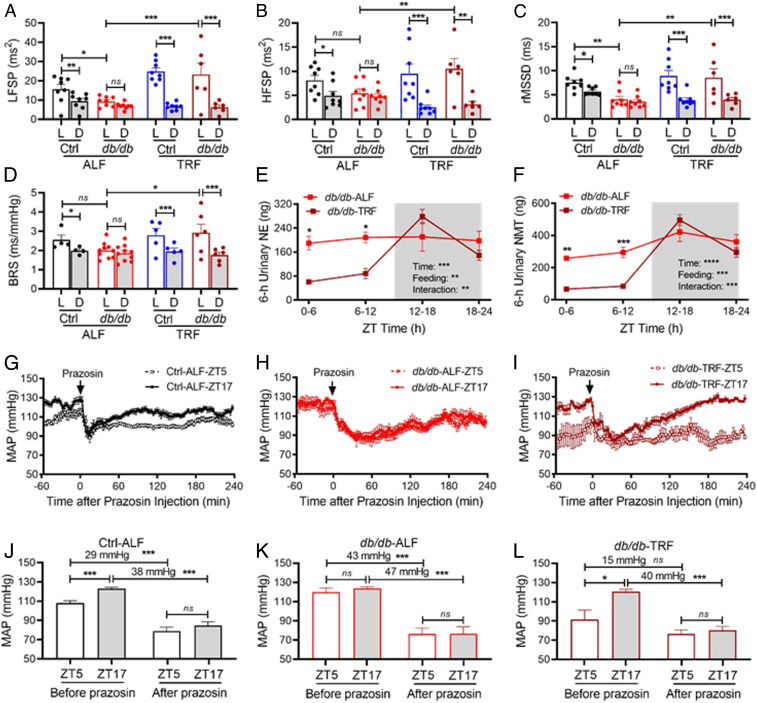Fig. 5.
The SNS mediates the TRF protection of BP circadian rhythm in db/db mice. (A−D) The 12-h average LFSP (A), HFSP (B), average rMSSD (C), and spontaneous BRS (D) during the light (L) and dark (D) phase in 16-wk-old db/db and control (db/+) mice that had been fed ALF or 8-h TRF for 10 wk. (E and F) Levels of NE (E) and its metabolite NMT (F) in 6-h urine samples collected at ZT0-6, ZT6-12, ZT12-18, and ZT18-24 from 15-wk-old db/db mice that had been fed ALF or 8-h TRF for 8 wk (n = 4 to 5). ZT, zeitgeber time (ZT0 = lights on and ZT12 = lights off). Levels of NE and NMT are expressed as total contents, calculated by concentration x urine volumes. The gray box indicates the dark phase. (G−I) The 3-min average MAP response to prazosin, an α1 adrenergic receptor antagonist (1 mg/kg; i.p.), at ZT5 and ZT17 in 18- to 21-wk-old Ctrl-ALF (G, n = 12), db/db-ALF (H, n = 9), and db/db-TRF (I, n = 4) mice after 14 d of TRF or ALF. (J−L) The 1-h average MAP before prazosin injection (baseline) and the lowest MAP after prazosin injection at ZT5 and ZT17 in the Ctrl-ALF (J; n = 12), db/db-ALF (K; n = 9), and db/db-TRF (L; n = 4) mice. The data were analyzed by three-way ANOVA (A−D) and two-way ANOVA (E−L) with multiple comparisons test and were expressed as the mean ± SE (SEM). *P < 0.05; **P < 0.01; ***P < 0.001; ns, not significant.

